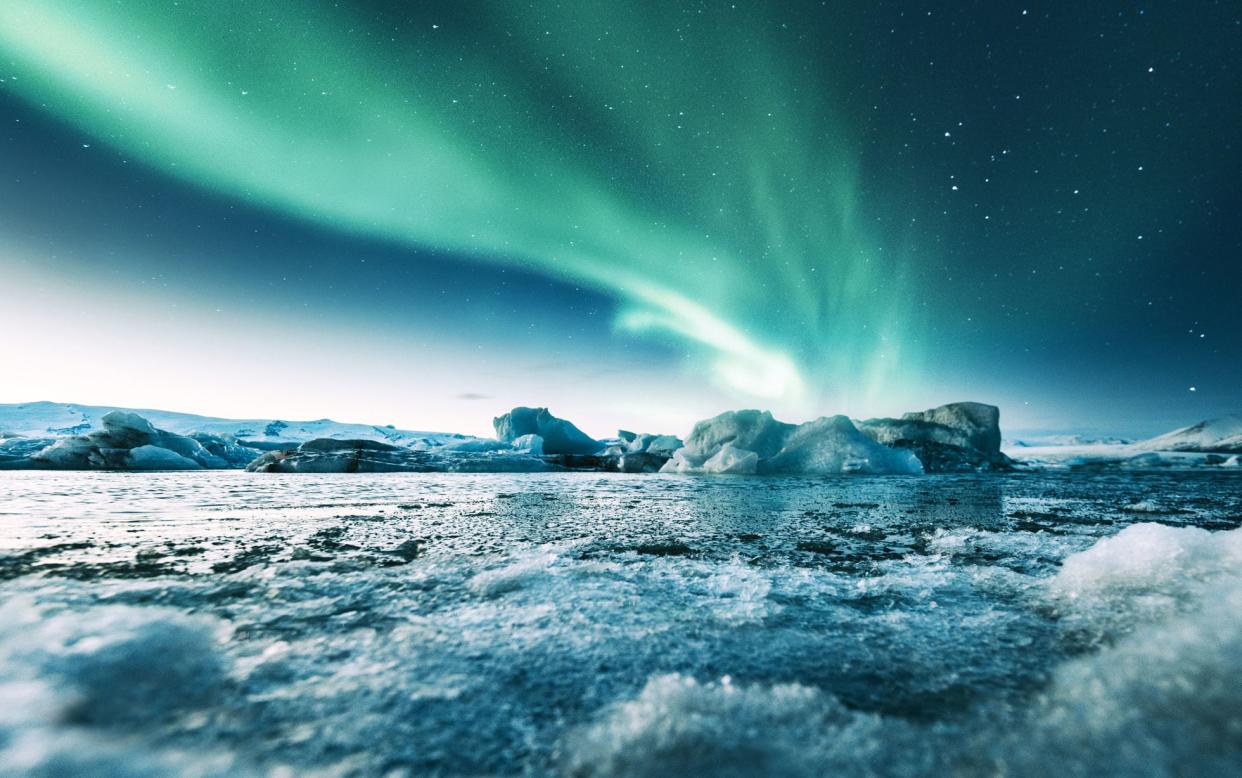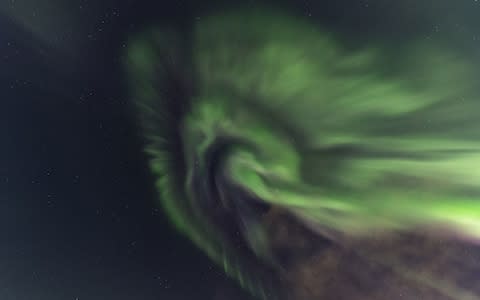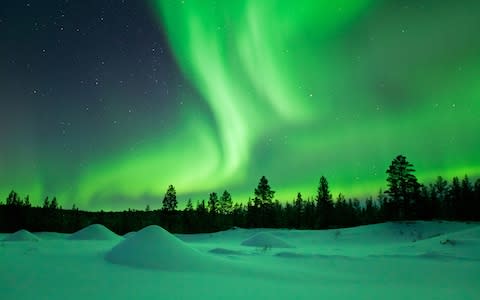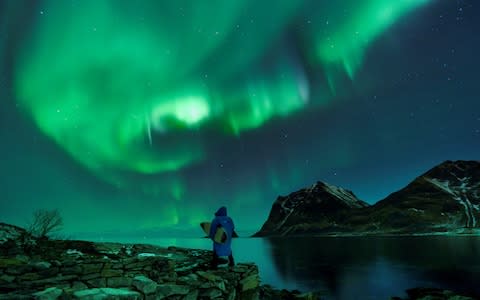Want to see the Northern Lights? Now's the perfect time, according to aurora experts

Holidaying with the intention of seeing the Northern Lights always comes with an element of pressure. You’re travelling with a very specific purpose. A very specific, very unpredictable purpose.
It’s never guaranteed that you'll see the aurora – one of nature’s greatest balletic performances – but a unique series of solar events earlier this month has put experts on high alert. They are so confident, in fact, that unusually firm predictions are being made for the beginning of November.
“Earlier this month a large coronal hole on the sun faced the Earth, sending solar wind hurtling towards us, leaving lucky spectators with a spine-tingling aurora borealis show," says Saevar Helgi Bragason, one of Iceland’s most renowned astronomers.
“Due to the fact the sun rotates once every 27 days or so, this means that around 27 days later it is most likely to occur again. This gives those visiting Iceland between 02-07 November a very high probability of sighting the northern lights.”
There are other factors that determine the probability of catching the ribboning night-time display, crucially the cloud cover. The moon position also plays a role but luckily, November 2-7 falls in the week during which it will be waning - the new moon being November 7.

Intrigued? It's worth looking at last-minute deals to Iceland, but choose the location of your accommodation carefully. Light pollution can significantly obscure your view, so try to get as far into the wild and away from man-made light as you possibly can. Or, if you want to base yourself in Reykjavik, consider renting a car.
You may also want to book soon. Clive Stacey, Managing Director of Discover the World – a popular provider of Northern Lights breaks – commented: “We have already seen a surge in bookings over this travel period from many clients who closely follow these astronomic updates. In over 35 years of operating Northern Lights trips to Iceland, I have never seen a prediction as positive as this before.
“We know that predicting the Aurora can be a risky business and nothing is never certain”, he added. “However, when the experts are excited we can’t help but get excited too. I for one will ensure I’m in Iceland for this period and will be keeping everything crossed for clear skies and a tremendous show.”

Dr Nathan Case from AuroraWatch UK told Telegraph Travel: “The months surrounding the equinoxes are generally good for aurora hunting. As we head into winter, the evenings start to stretch out, giving us more chance to see them. A space weather phenomenon called the 'Russell-McPherson' effect also means that the Earth’s magnetic field is aligned more favourably to generate strong auroral displays.”
While Dr Case did err on the side of caution – the coronal holes could collapse or weaken by the time the sun rotates back around – he did suggest it may be possible to see the display in the UK. If the conditions are right. “UK aurora hunters should keep an eye out for aurora alerts around this time, as if the coronal hole produces strong enough solar wind for a second time, we may be lucky enough to spot the aurora from the UK too. Those in northern Scotland, away from the city lights, stand the best chance.”
What are the northern lights?
The mesmeric lights are formed from fast-moving, electrically charged particles that emanate from the sun – a kind of sun storm. These are driven towards the poles by the Earth’s magnetic field and their varying colours are a result of the different gases in the upper atmosphere.

“It’s a phenomenon that occurs about 60 miles above the surface of the earth,” says Neal Brown, a former Nasa scientist. “They are storms from the sun that take roughly two days to reach Earth and interact with the Earth’s magnetic fields and its atmosphere. The solar storm is guided in along the magnetic field lines to give an electrical discharge, a bit like a neon sign, with the atoms and molecules in the earth’s atmosphere. So we see greens, blues and reds. We have the most colourful displays in the solar system but there are auroras on Jupiter, Saturn and Uranus, too.”
While the lights occur both in the north (Aurora Borealis) and the south (Aurora Australis), the principle audience for the latter, it being Antarctica, is penguins.
Where else can you see them?
It’s not just Iceland that the Aurora could grace with its presence this November. Other Scandinavian countries offering potential viewing opportunities include Sweden, Norway and Finland. If you’re thinking of throwing all caution to the solar wind, you could splash out on a grand last-minute trip to Canada.
If flitting off to the chase the lights is out of your budget (or you’ve used all your annual leave), you may be able to spot the lights in the UK sky. According to Dr Case, “whilst the aurora is often visible from Iceland, it can be seen from the UK too – particularly in the north of Scotland.”
“You’ll want to head as far north as you can”, he advises. “Somewhere with a clear view of the northern horizon (such as hillside or beach) and away from city lights. And you’ll have to hope for good weather – the aurora can’t be seen through clouds.”
AuroraWatch UK (aurorawatch.lancs.ac.uk/) offers free, real-time alerts as to when the aurora might be visible.
Would you take a gamble on seeing the Northern Lights? Or perhaps you already have. Join the conversation and leave a comment in the box below.